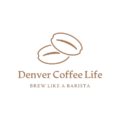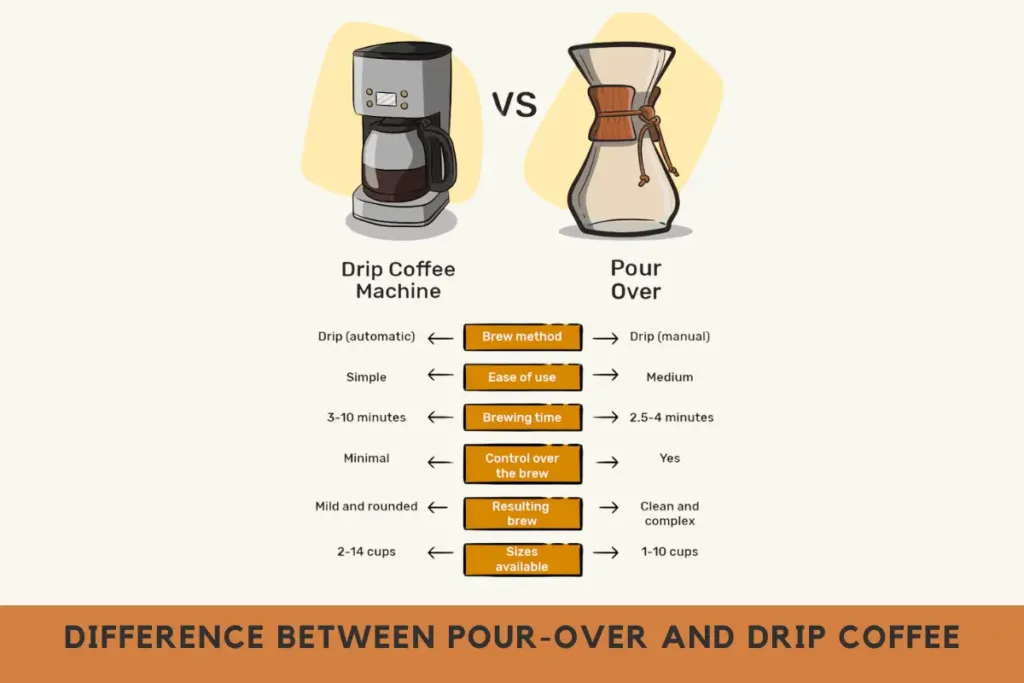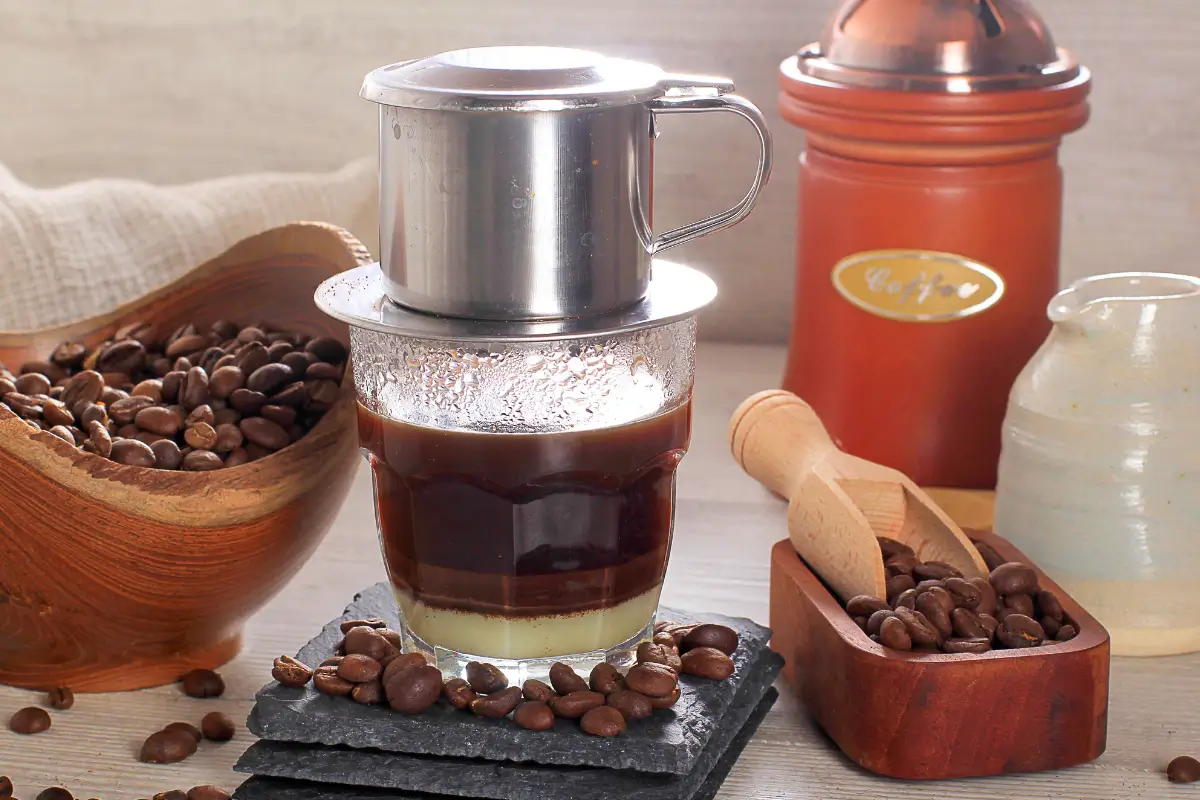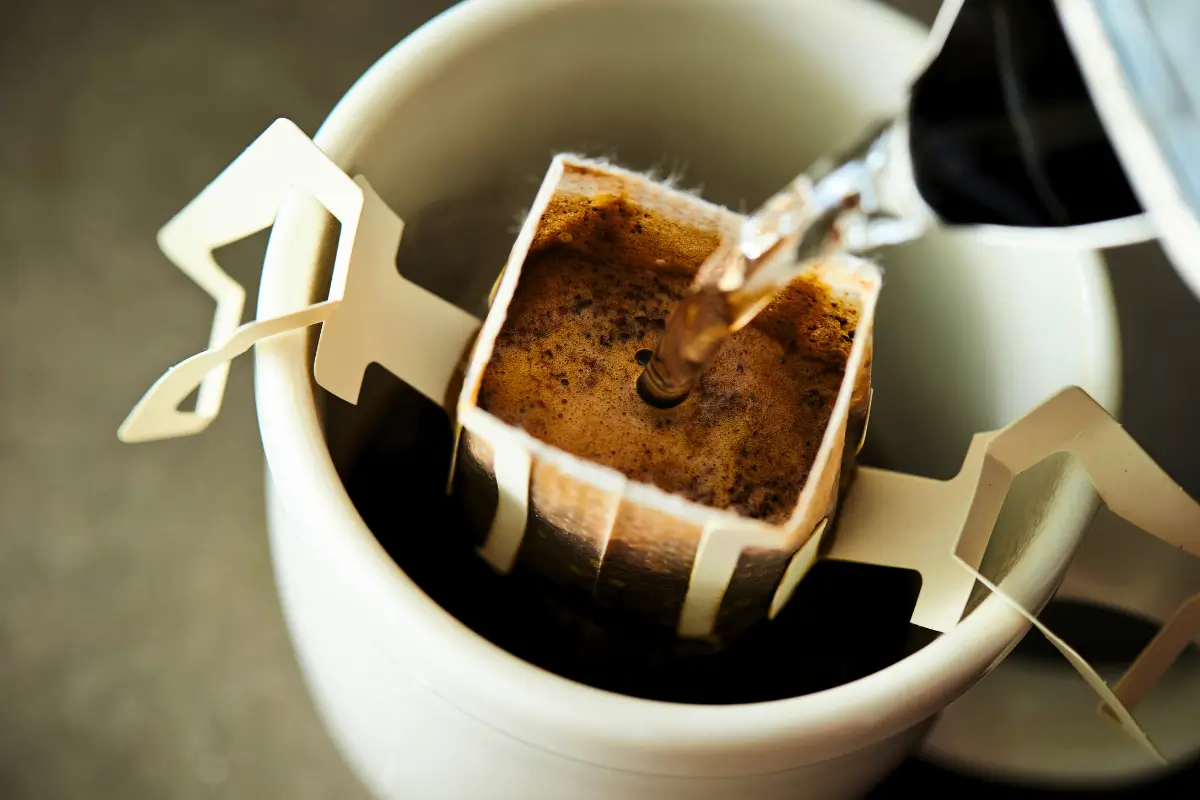Pour Over vs Drip Coffee: Which Brew is Best for You? Discover the key differences between these popular brewing methods. Learn about flavor profiles, control, and equipment to find your perfect cup.
Pour-over and drip coffee are popular brewing methods but differ significantly in process and flavor. Pour-over requires manual effort and precision, allowing control over brewing time and water flow. This method often results in a cleaner, more flavorful cup. Drip coffee, on the other hand, is more convenient and automated.
It uses pre-set brewing times and temperatures, making it ideal for busy mornings. Both methods have their own unique advantages and cater to different preferences. Understanding these differences helps coffee enthusiasts choose the best method for their needs. Each technique offers a distinct experience and taste profile.
Pour Over vs. Drip Coffee: Brewing Your Perfect Cup
Coffee lovers enjoy different brewing methods. Two popular ways are pour-over and drip coffee. Each method has its own style and flavor. Understanding these methods can enhance your coffee experience.
The Popularity Of Home Brewing
More people brew coffee at home now. It saves money and offers control over the taste. Home brewing makes it easy to enjoy quality coffee every day. Both pour-over and drip coffee are popular choices.
Key Differences At A Glance
| Criteria | Pour-Over Coffee | Drip Coffee |
|---|---|---|
| Brewing Time | 3-4 minutes | 5-10 minutes |
| Flavor Control | High | Moderate |
| Ease of Use | Manual | Automatic |
| Equipment | Pour-over dripper, kettle | Drip coffee maker |
| Cost | Low to Moderate | Moderate to High |
The Pour-over Method
The Pour-Over Method is a manual coffee brewing technique. It allows you to control every aspect of the brewing process. This method highlights the natural flavors of the coffee beans. It requires patience and precision but rewards you with a rich, aromatic cup of coffee.
Essentials Of Pour-over Equipment
To master the pour-over method, you need specific equipment. Here are the essentials:
- Pour-Over Dripper: This holds the coffee grounds.
- Paper Filters: Filters the coffee, removing sediment.
- Gooseneck Kettle: Provides precise water flow control.
- Fresh Coffee Beans: Always use freshly ground beans.
- Grinder: Grind beans to your preferred consistency.
- Scale: Ensures accurate measurement of coffee and water.
Each piece of equipment plays a vital role in achieving the perfect brew.
The Art Of Manual Pouring
Manual pouring requires a steady hand and careful timing. Follow these steps for an ideal pour-over:
- Heat water to 200°F (93°C).
- Place the filter in the dripper and rinse with hot water.
- Add freshly ground coffee to the dripper.
- Pour a small amount of water in a circular motion to bloom the coffee.
- Wait 30 seconds, then continue pouring in small circles.
- Maintain a consistent water flow and avoid pouring too quickly.
Practice makes perfect. Each pour should be slow and controlled.
| Step | Description |
|---|---|
| Heat Water | Heat to 200°F for optimal extraction. |
| Rinse Filter | Rinse with hot water to remove the paper’s taste. |
| Add Coffee | Use fresh, ground coffee beans. |
| Bloom | Pour to bloom and let the coffee expand. |
| Pour Slowly | Continue pouring in small, circular motions. |
These steps ensure an even extraction. The result is a flavorful, balanced cup of coffee.
Drip Coffee Explained
Drip coffee is a popular brewing method. It offers simplicity and consistency. Understanding how it works can elevate your coffee experience.
Understanding Automatic Drip Machines
Automatic drip machines are common in many homes. These machines automate the brewing process.
Here’s a basic breakdown:
- Water Reservoir: Holds the water to be heated.
- Heating Element: Heats the water to the right temperature.
- Showerhead: Distributes hot water over coffee grounds.
- Filter Basket: Holds the coffee grounds and filter.
- Carafe: Collects the brewed coffee.
The machine heats water and pours it over coffee grounds. Gravity pulls the water through the grounds, extracting flavors. The brewed coffee drips into the carafe below.
The Convenience Factor
Automatic drip machines are very convenient. They require minimal effort from the user.
Here are some key benefits:
- Ease of Use: Just add water and coffee grounds.
- Consistent Results: Machines provide uniform brewing.
- Programmable Settings: Some models allow you to set a timer.
- Large Batch Brewing: Brew multiple cups at once.
Drip coffee machines are perfect for busy mornings. They save time and deliver a great cup of coffee.
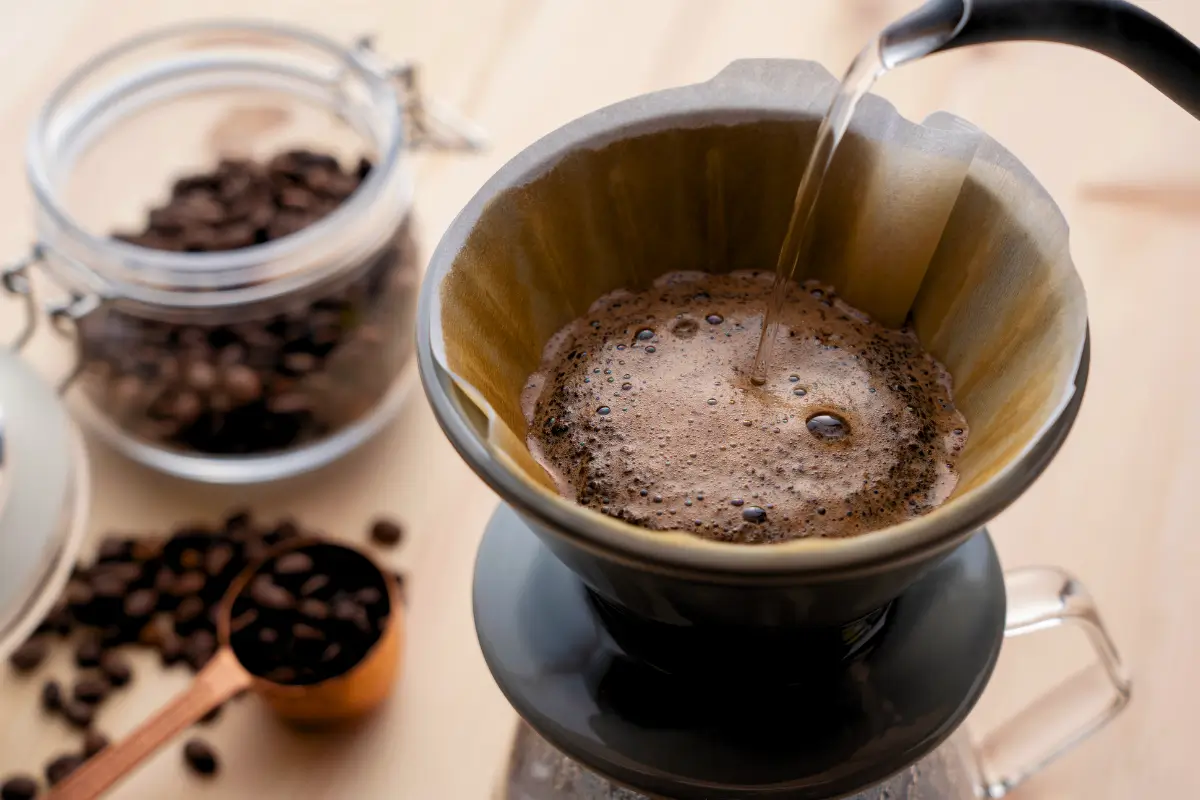
Taste And Texture
When comparing pour-over and drip coffee, taste and texture stand out. Each brewing method offers a unique experience. Let’s dive into the flavor profiles and consistency of both methods.
Flavor Profiles Of Pour-over
Pour-over coffee boasts complex flavor profiles. This method highlights individual bean characteristics. Pour-over brewing allows control over the extraction process. The result is a clean, bright cup with a rich taste. Many coffee enthusiasts prefer pour-over for its nuanced flavors. You can taste different notes, like fruit and chocolate. The texture is usually light and smooth.
Consistency In Drip Coffee
Drip coffee is known for its consistency. Machines control the brewing process, ensuring uniformity. The flavor is often balanced and predictable. Drip coffee tends to have a thicker texture. The taste is usually more robust and straightforward. It’s perfect for those who enjoy a reliable cup every time.
| Aspect | Pour-Over | Drip Coffee |
|---|---|---|
| Flavor Profile | Complex, Nuanced | Balanced, Predictable |
| Texture | Light, Smooth | Thicker, Robust |
Both methods have their unique strengths. Choose based on your flavor and texture preferences.
Brewing Time Comparison
Brewing time is a key factor in coffee-making. It affects the taste and aroma of your coffee. Understanding the differences between pour-over and drip coffee can help you choose the right method for your needs.
Speed Of The Drip
Drip coffee is known for its speed. The process is automated and quick. Most drip coffee makers brew a full pot in 5-10 minutes. You simply add water and coffee grounds, then press a button. The machine handles everything else. This makes drip coffee perfect for busy mornings. You get a consistent cup every time.
Patience For Pour-over
Pour-over coffee requires more time and patience. The process is manual and precise. Brewing a single cup can take 3-4 minutes. You pour hot water over coffee grounds in slow, circular motions. This allows for better control over the brewing process. Many coffee enthusiasts prefer pour-over for its rich, aromatic flavor. The extra time and effort result in a more enjoyable cup.
| Brewing Method | Time Required | Effort |
|---|---|---|
| Drip Coffee | 5-10 minutes | Low |
| Pour-Over Coffee | 3-4 minutes per cup | High |
Both methods have their pros and cons. Drip coffee is faster and easier. Pour-over coffee offers more control and flavor. Choose the method that fits your lifestyle and taste preferences.
Grind Size And Its Impact
Understanding the grind size is crucial for crafting your perfect cup of coffee. The grind size impacts the extraction rate of the coffee. It can make or break the flavor. Let’s explore how grind consistency and optimal grind size differ for pour-over and drip coffee methods.
Grind Consistency For Pour-over
Pour-over coffee demands a consistent grind size. This method typically uses a medium-coarse grind. The even grind ensures uniform extraction. An inconsistent grind can lead to uneven brewing. This affects the taste, making it either too bitter or too weak.
Using a burr grinder helps maintain consistency. Blade grinders often create uneven particles. Consistency is key to a balanced cup of pour-over coffee. A good pour-over coffee showcases the beans’ true flavors.
Optimal Grind For Drip Brew
Drip coffee makers work best with a medium grind size. This size is slightly finer than for pour-over. The water drips slowly through the coffee. A medium grind allows for proper extraction.
If the grind is too fine, the coffee may over-extract. This leads to a bitter taste. If too coarse, the coffee may under-extract, resulting in a weak flavor. A medium grind strikes the right balance. It ensures a rich and satisfying cup of drip coffee.
Here’s a quick comparison table:
| Method | Grind Size | Impact |
|---|---|---|
| Pour-Over | Medium-Coarse | Balanced flavor, prevents over/under extraction |
| Drip Brew | Medium | Rich taste avoids bitter or weak coffee |
Choosing the right grind size enhances your coffee experience. It brings out the best flavors from your beans. Whether you prefer pour-over or drip brew, the grind size matters.
Control And Customization
Understanding the control and customization in coffee brewing can help elevate your coffee experience. Both pour-over and drip coffee methods offer unique advantages. Let’s explore these differences in detail.
Precision In Pour-over Brewing
Pour-over brewing allows for precise control over each step. You can adjust the water temperature and pouring speed. This method also lets you control the coffee-to-water ratio easily. Here’s a breakdown of the key elements:
- Water Temperature: You can use a thermometer to get the perfect temperature.
- Pouring Speed: A gooseneck kettle lets you pour at your own pace.
- Grind Size: You can experiment with different grind sizes for optimal flavor.
This level of customization can help you achieve a coffee that suits your taste perfectly.
Settings And Features Of Drip Coffee Makers
Drip coffee makers offer various settings and features to enhance your coffee. While they don’t offer as much manual control, they are convenient and consistent. Here are some common settings:
| Feature | Description |
|---|---|
| Programmable Timer | You can set the brew time in advance. |
| Strength Control | Adjust the strength of your coffee with a button. |
| Keep-Warm Function | Keep your coffee hot for a specified time. |
These features make drip coffee makers ideal for busy mornings. They provide a reliable cup of coffee with minimal effort.
Cleaning And Maintenance
Cleaning and maintenance play crucial roles in the taste and longevity of your coffee equipment. Both pour-over and drip coffee methods require regular cleaning, but the processes differ significantly. Let’s explore the nuances of each.
Simplicity Of Pour-over Care
Pour-over coffee makers are straightforward to clean. Their design is simple, often consisting of just the carafe and the dripper.
- Rinse the dripper immediately after use to remove coffee grounds.
- Wash the carafe with warm, soapy water. Dry it thoroughly.
- Use a brush to clean the dripper holes.
Avoid using harsh chemicals. Natural cleaning agents like vinegar work well. Pour-over equipment needs minimal maintenance, making it user-friendly.
Drip Machine Cleaning Protocols
Drip coffee machines are more complex. They have multiple parts that require cleaning.
- Empty and rinse the carafe and filter basket daily.
- Descale the machine monthly using a vinegar solution. This removes mineral buildup.
- Clean the water reservoir weekly with warm, soapy water.
Drip machines often have small, hard-to-reach areas. A special brush helps clean these spots. Regular maintenance ensures your machine runs smoothly and produces great coffee.
Cost Considerations
When deciding between pour-over and drip coffee, cost is a key factor. Both methods require different equipment and have varying price points. Let’s explore the cost considerations for each.
Investment In Pour-over Gear
Pour-over coffee requires specific gear. The main items you need include:
- Pour-Over Dripper: Prices range from $10 to $50.
- Gooseneck Kettle: Costs between $20 to $100.
- Filters: A pack of 100 costs around $10.
- Scale: Can range from $15 to $50.
- Grinder: Manual grinders start at $20, and electric ones start at $50.
The total initial investment can range from $75 to $260. The quality of equipment affects the final price. High-end gear provides better control over your brew.
Price Range Of Drip Coffee Makers
Drip coffee makers come in various models. Prices vary based on features and brand. Here is a breakdown:
| Category | Price Range |
|---|---|
| Basic Models | $20 – $50 |
| Mid-Range Models | $50 – $150 |
| High-End Models | $150 – $500 |
Basic models have fewer features but are affordable. Mid-range models offer better quality and more features. High-end models provide advanced settings and superior build.
Additionally, drip coffee makers use paper filters. These cost around $10 for a pack of 100. Some models come with reusable filters, reducing ongoing costs.
Environmental Impact
Understanding the environmental impact of coffee brewing methods is crucial. Both pour-over and drip coffee have unique footprints. This section delves into how each technique affects our planet.
Waste And Sustainability In Pour-over
Pour-over coffee often uses reusable filters. This reduces waste. Many enthusiasts prefer metal or cloth filters. These can be washed and used again. Reusable filters help decrease paper waste.
Pour-over setups use minimal energy. You heat the water separately. This can be more efficient than a drip coffee maker. Also, pour-over equipment often lasts longer. It doesn’t have complex parts that may break down.
Drip Coffee And Its Eco-footprint
Drip coffee makers usually use paper filters. This creates more waste. Many people don’t compost these filters. They end up in landfills. Some drip machines have reusable filters. But, these are less common.
Drip machines consume more electricity. They keep water hot for extended periods. This increases your household’s energy use. Also, these machines can break more easily. This leads to more electronic waste.
| Aspect | Pour-Over | Drip Coffee |
|---|---|---|
| Filter Type | Reusable (metal, cloth) | Mostly paper, some reusable |
| Energy Consumption | Minimal | Higher |
| Waste Production | Less waste (reusable filters) | More waste (paper filters) |
| Durability | Long-lasting equipment | More prone to breakage |
Choosing between pour-over and drip coffee impacts the environment. Consider these factors for a more sustainable choice. Reducing waste and energy use benefits everyone.
Frequently Asked Questions
What is the main difference between Pour over vs Drip coffee?
The primary difference lies in the brewing process. Pour-over involves manually pouring hot water over coffee grounds, allowing for greater control over extraction. Drip coffee uses a machine to filter hot water through coffee grounds, providing a more consistent brew but with less manual control.
Is Pourover Better Than Drip Coffee?
Pourover offers more control over brewing time and water distribution, often resulting in a richer flavor. Drip coffee is convenient and consistent. Preference depends on taste and convenience needs.
What’s So Special About Pour Over Coffee?
Pour over coffee allows precise control over brewing time and temperature. This method highlights coffee’s natural flavors. The result is a clean, rich, and aromatic cup. Perfect for coffee enthusiasts seeking a tailored experience.
Which Coffee Brewing Method Is The Best?
The best coffee brewing method depends on personal preference. Popular methods include the French press, pour-over, and espresso. Each offers unique flavors.
Why Is Drip Coffee The Best?
Drip coffee is the best because it provides a balanced flavor, convenience, and consistent brewing. It preserves the coffee’s natural oils and aromas. This method is user-friendly and ideal for daily use.
Conclusion
Choosing between pour-over and drip coffee depends on your preferences. Pour-over offers control and flavor. Drip coffee provides convenience and consistency. Both methods have unique benefits. Experiment to find your ideal brew. Enjoy the journey of discovering your perfect cup of coffee.
Happy brewing!
